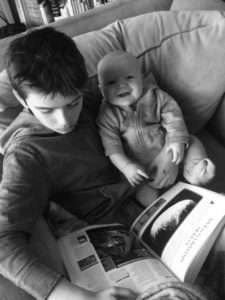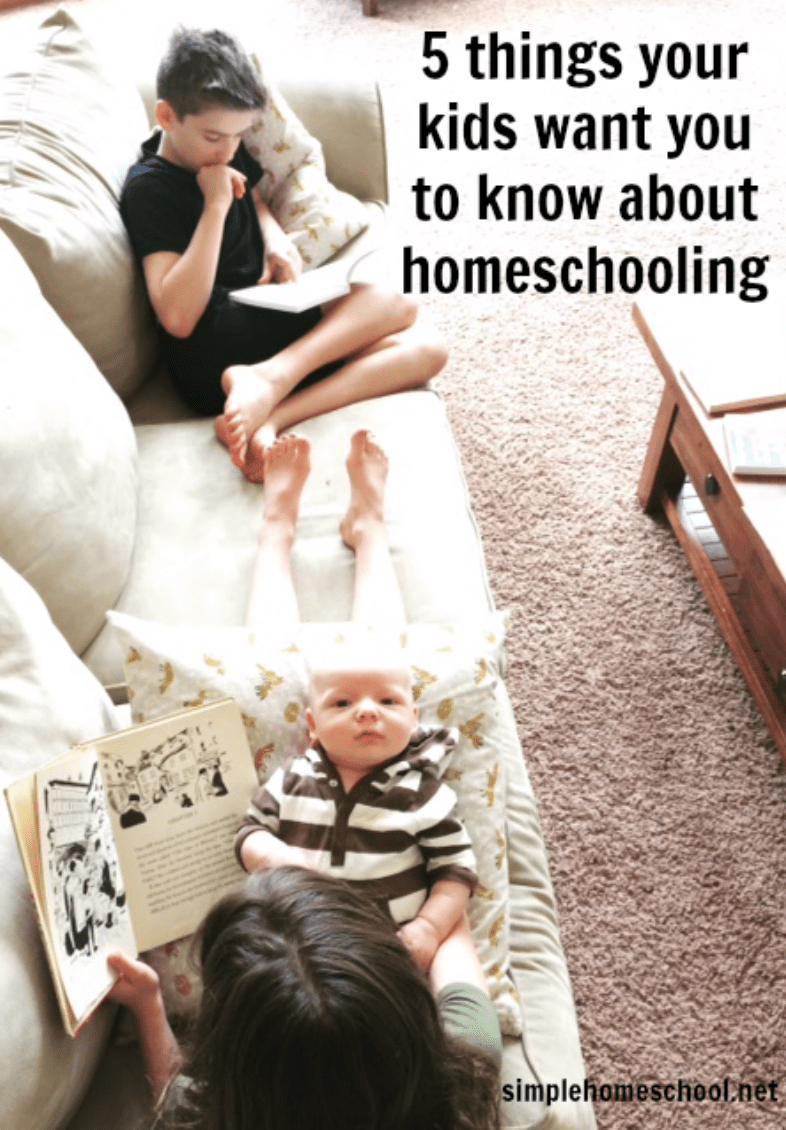Written by Kari Patterson
I recently sat on the couch with another homeschooling friend and discussed the kind of moms we want to be. There’s so much pressure out there to be more and do more, to hustle, hurry, achieve. But I always find myself returning to this simple question that helps center my spirit:
If I were a child, what kind of mom would I want?
I usually arrive at something like this: I’d like a mom who’s warm and kind, who isn’t in a hurry, who listens to my stories and admires my artwork, who smiles and helps me when I need it. I’d like a mom who’s a little bit squishy when I hug her and isn’t too worried about stuff, who teaches me how to live without getting too angry when I mess up. I’d like a mom who genuinely enjoys being my mom.
It’s interesting to note that children, for the most part, don’t want a mom who’s a certain weight, who looks a certain way, who has a certain size house or a certain job or makes a certain amount of money.
Children have a way of reminding us what really matters.
Along these same lines, I thought, If I were a child, what kind of homeschool would I want? Better yet, what do my actual children want? I had a feeling that a “Pinterest-worthy schoolroom” wasn’t high on their list.
So, out of curiosity, I interviewed my sixth and fourth graders and asked them, “If you could represent all kids, and share five things with homeschooling parents, what would you say? What makes for a great homeschool?”
This is what they said:
1. Nature

Their number one, most important component was plenty of time outside. Of course, the importance of ample outdoor activity is well-documented, as it helps kids develop intellectually, physically, and socially. Estimates vary widely, but some reports show that youth aged 8-18 now average seven hours a day on various screens, and only 12.6 minutes of vigorous outdoor activity.
It is virtually impossible to overstate the importance of interacting with the outdoor world, and yet how often do we feel guilty for skipping a formal school lesson so they can run around outside?
Just today I scrapped history in favor of riverside rock skipping. It feels like playing hooky, but maybe it’s what they need most.
2. Living Things
Technically the answer they gave was “animals,” but I’m going to go broader. While our daughter enjoys taking care of our chickens and cat, our son prefers caring for plant life. Either way, the real responsibility of taking care of a living thing is excellent for teaching diligence, discipline, compassion, and care.
Widening the circle, let’s include care for others in our homeschool curriculum, whether through letter-writing to sponsored children, serving at a homeless shelter, or serving in any number of other capacities. By putting a high priority on relationships, we learn to serve, love, and take care of those around us. Those skills will serve our children long after their book knowledge becomes obsolete.
3. Books
Of course, this seems obvious, but they both stated emphatically, “Books! Read lots and lots of books!” My son loves to quote Stanley Schmidt (Life of Fred), “You can learn more by reading 5 hours a day than by going to school 7 hours a day.”
Without a doubt, most of what my children have learned is what they’ve discovered, on their own, by reading, rather than things I’ve formally taught them.
Even as I typed this paragraph I have been interrupted twice: Once requesting to buy the next six books in a series (with her own money), and again by an argument breaking out over who gets to read the new books first. (Ha!) This year I’ve attempted to simply surround the kids with excellent, virtuous, fascinating books and fuel their literary hunger as it grows.

4. Creativity
Surprisingly, it was my book-loving son, not my artistic daughter, who asserted that creative learning was vital. It’s true, so much just cannot be learned from words on a page. Fractions suddenly matter when you’re doubling a recipe. Pizza slices make denominators make sense.
Measuring a room for new carpet solidifies area, and acting out historical scenes helps them come alive. Similarly, songs are a sure-fire way for information to stick. We still laugh about the kids memorizing the timeline song as little ones, thinking the Songhai line said, “Some guy in Africa!” Even if we jumble it up a bit, we remember it!
Yes, creative learning takes longer, and is often messy, but if the lesson sticks, it’s worth it!
 5. Smile
5. Smile
Ah, yes. My daughter chimed in with the last, and most important, component of all. You’re never fully dressed without it, especially as a homeschooling parent.
No matter what your curriculum, philosophy, or schedule, adding a smile is the best way to make it soar. As silly as it sounds, practice smiling. The more you smile, the more your kids will smile. The more you all smile, the more you will enjoy each day, and I believe, the more you will learn in the end.
Of course, my kids mentioned a few other things that didn’t make the list:
“Have a baby! Babies are the best!” (Heidi)
“Read the Bible every day!” (Heidi)
“Let your kids do Life of Fred!” (Dutch)
There you have it, the experts’ opinion. Now, go ask yours!
KIDS: What 5 things do you think are the most important components of a great homeschool? We’d love to hear!



 Weekend homeschool links
Weekend homeschool links
A great reminder! My kids love their free time.
A joy for learning stays throughout our lives. I remember with gratitude and affection my favorite teachers. And although I wasn’t homeschooled, those lessons taught by my momma and daddy were the most deeply felt. Keep on keeping on, Kari Patterson, and all you homeschooling parents. You are shaping lives wonderfully and well.
I love these tips. My children are 4 and 2 and we are headed down this homeschooling road. Your information is so helpful and will be a perfect foundation for us to build off of. Thank you to you and your kids!
Britt’s latest post: Tips for Getting Toddlers and Young Kids to Speak More
This seriously hit the spot. How in all my preparing did I forget to ask myself such a vital question.
Thank you so much for reminding me.
Olivia